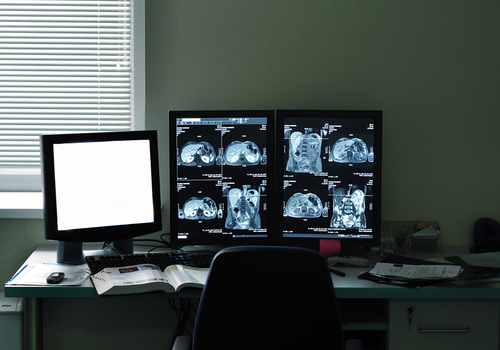 Researchers at The University of Texas MD Anderson Cancer Center have found that when given brachytherapy treatment, older women suffering from invasive breast cancer had a higher risk of needing a mastectomy later in treatment compared with female patients who had been treated using traditional radiation therapy.
Researchers at The University of Texas MD Anderson Cancer Center have found that when given brachytherapy treatment, older women suffering from invasive breast cancer had a higher risk of needing a mastectomy later in treatment compared with female patients who had been treated using traditional radiation therapy.
Brachytherapy administers radiation therapy internally to a targeted region inside the breast through the temporary insertion of a small catheter, decreasing treatment periods and presenting fewer side effects than external beam radiation.
The use of brachytherapy after lumpectomy is gaining popularity as a treatment for breast cancer, however, data relative to its effectiveness are conflicting and the criteria for patient selection to receive brachytherapy have never been effectively validated.
“We were interested in comparing how well different treatment strategies work to enable long-term breast preservation,” said Benjamin Smith, M.D., associate professor in Radiation Oncology and lead author of the study in an MD Anderson press release. “Our results could impact care by helping patients and providers understand the tradeoffs between these two treatment strategies in greater detail.”
The authors utilized a Surveillance, Epidemiology, and End Results–Medicare linked database to compare 3,594 women who were 66 years or older with invasive breast cancer or ductal carcinoma in situ diagnosed from 2002 to 2007, and treated with either lumpectomy alone, brachytherapy, or external beam radiation therapy (EBRT).
The results revealed that after the use of lumpectomy surgery alone, the 5-year subsequent mastectomy risk was of 4.7% — 2.8% after brachytherapy and 1.3% after EBRT — revealing that brachytherapy had increased toxicity and lower breast preservation.
Additionally, the researchers analyzed the American Society for Radiation Oncology’s (ASTRO) criteria for selecting treatment, concluding that within each ASTRO group, EBRT accounted for the lowest subsequent mastectomy risk versus lumpectomy alone, while brachytherapy presented some benefits versus lumpectomy alone, albeit not as much as EBRT. However, patients who were deemed ideal for receiving brachytherapy through the use of the ASTRO consensus statement on partial breast radiation had similar breast preservation rates as patients treated with EBRT, with a 1.6% and 0.8% mastectomy incidence, respectively.
Furthermore, brachytherapy was associated with a higher postoperative infection risk and with the development of seromas, fluid-filled cavities in the breast caused by rupture of blood vessels and infiltration of pro-inflammatory cells.
[adrotate group=”1″]
“Our data provide some support for the ASTRO guidelines and indicate for patients who don’t meet the stringent criteria outlined by ASTRO, we might be more careful about offering brachytherapy until additional data from clinical trials become available,” said Dr. Smith “The takeaway message to both physicians and older breast cancer patients is that, in general, all of these patients did well with very high likelihood of breast preservation. However, likelihood of breast preservation was best with external beam radiation, worst with no radiation, and in between with brachytherapy,” he concluded.
Although there have been numerous advances in developing new and improved brachytherapy catheters, further studies with a longer-term follow-up will be necessary to understand the long-term effects of the therapy, since recurrence and mastectomy risks increase over time.
This study was published in the International Journal of Radiation Oncology, and was funded by grants from the National Cancer Institute, the Cancer Prevention and Research Institute of Texas and Varian Medical Systems.
In addition to Dr. Smith, researchers involved in the MD Anderson study included Thomas Buchholz, M.D., Grace L. Smith, M.D., Ph.D., Karen Hoffman, M.D., all of Radiation Oncology; Sharon Giordano, M.D., of Health Services Research; Kelly Hunt, M.D., of Surgical Oncology; and Ying Xu, M.D., and Jing Jiang of the Department of Biostatistics.


